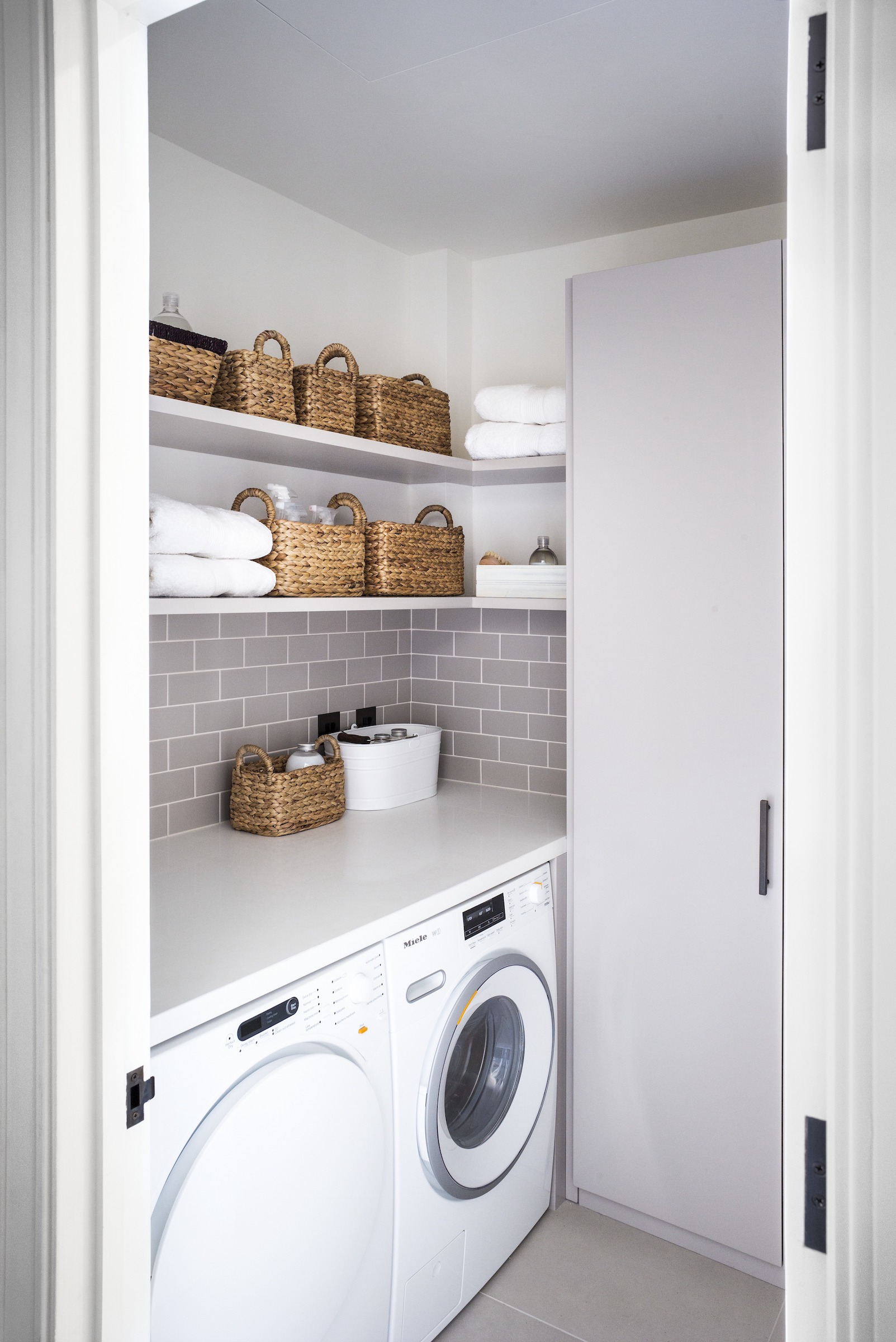
There’s no doubt our washing machines play a vital role in our homes. But with winter storms raging outside, even this reliable appliance isn't immune to the season's icy grip.
Frozen pipes in washing machines are a surprisingly common home plumbing issue. They strike when we least expect it and transform our cozy laundry rooms into scenes of frustration. But there's no need to let a little ice put a damper on your day.
We asked home plumbing experts why our washing machine pipes freeze and, more importantly, how we can easily thaw them.
What to do if your washing machine freezes
If your trusty washing machine has turned into a block of ice, don’t fret. Follow these straightforward methods to thaw out your pipes and get back on top of your laundry routine.
What causes a washing machine to freeze?

'Unless you have completely emptied your washing machine of water, there is water sitting in it regardless of whether it is being used or not,' explains Joseph Wade, VP of Operations at Benjamin Franklin Plumbing. 'Once the temperature drops to freezing or below (32°F), that water will freeze, which can damage the washing machine and may require professional repair.'
How to unfreeze washing machine pipes

It you suspect your washing machine pipes have frozen, try these simple DIY solutions to thaw your pipes before calling a professional:
1. Thaw pipes with warm water
A reliable way to unfreeze your washing machine is by using warm water to let it thaw. Joesph Wade explains:
'To start, fill the tub with warm water and then close the lid – letting the water sit for about 1 to 2 hours. Do not use boiling water as this may result in injury, and it is not necessary to thaw the machine.
'After that, you’ll want to drain the water out of the tub by removing the plug from the drain hose and hold until there is no longer any water pouring from the machine. Once fully drained, plug the drain hose back in and run a rinse cycle to test if the machine is working. If problems are persisting, call a plumber for professional assistance.'
2. Raise the ambient temperature
As well as using the method above, raising the ambient temperature of your home can help speed up the thawing process and return your machine to its usual cycle. Try these methods:
Turn up the heat: Increasing the temperature of the room where the pipes are located can help thaw them gradually. You can do this by turning up your home's thermostat or using a space heater in the room. If you opt for the latter, ensure it's used safely and not left unattended.
Open cabinet doors: If your washing machine is in a cabinet, open the doors to allow warmer air to circulate around the plumbing.
Let faucets drip: Allowing your home faucets to drip slightly can help prevent pipes from freezing, as moving water is less likely to freeze.
Insulate your pipes: Once the pipes are thawed, consider insulating them to prevent future freezing. Pipe insulation sleeves are available at most hardware stores and are relatively easy to install.
Remember, the key to thawing frozen pipes is to act gently and patiently. Rapid thawing can cause pipes to crack or burst, leading to more serious problems.
How to winterize a washing machine

If you are planning on being away from your home during the colder months, it is always a good idea to drain your home plumbing system to prevent the possibility of frozen pipes. However, if you are planning on being home and will need to use your washing machine regularly, it is possible to winterize your machine while it is in use.
You can use an RV-type antifreeze – like Super Tech RV and Marine Antifreeze from Walmart – to prevent any water in the machine from freezing. Joseph Wade from Benjamin Franklin Plumbing explains:
'Start by shutting off the hot and cold water supply valves and unscrewing the cold and hot water supply hoses from the machine. You will then want to turn the washer settings to “fill” and warm wash, letting it run for about 10 seconds. Following that, lift the washer lid, pour about a half-gallon of the RV anti-freeze into the tub, switch the washer set to “drain and spin,” and let it run for another 10 seconds.'
Once you have completed those steps, you will need to reconnect the valves and screw back in both supply hoses to the machine. Then, pour one cup of liquid laundry detergent into the washer, and run the machine through a complete cycle to ensure the RV anti-freeze is fully mixed.
'We also recommend hiring a local professional to install heat cables to your pipes, especially if you live in an area with consistently freezing temperatures during the winter months,' adds Joseph. 'Heat cables have thermostats that read your pipe’s temperature and turn the heat on if it gets too low.'
FAQs

Can you wash your clothes when pipes are frozen?
It's not advisable to wash clothes when your washing machine's pipes are frozen. When the pipes are frozen, water can't flow into or out of the machine effectively, making it impossible for the washer to operate properly. Moreover, attempting to use the washing machine in this state could potentially cause damage to the appliance. The water pump might get damaged trying to pull in water through frozen pipes, or if there's any ice within the pipes, it could lead to cracks or bursts once the ice expands.
It is best to wait until the pipes have fully thawed and you have checked for any potential damage before attempting to use the washing machine. In the meantime, you should hand-wash essential items of clothing or bedding.
How long does it take for washer pipes to unfreeze?
The time it takes for washer pipes to unfreeze will vary depending on several factors, including the severity of the freeze, the insulation around the pipes, the ambient temperature of your home, and the method used to thaw them.
In mild cases, pipes might thaw on their own in a few hours if the temperature rises or if they're in a warm area of the house. However, in more severe cases, especially if the pipes are in an unheated or poorly insulated area, it could take a day or more.
'When a washing machine freezes, it can result in a multitude of issues for the machine that may require professional help,' explains Joseph Wade from Benjamin Franklin Plumbing. 'While it is possible to potentially fix these issues on your own, we strongly suggest calling a licensed plumber. This will ensure the washing machine is handled correctly and can prevent further damage from errors that may occur when fixing it yourself.'
If you are planning on vacationing during the winter months, we recommend winterizing your home to prevent any damage caused by freezing pipes or cold temperatures.







